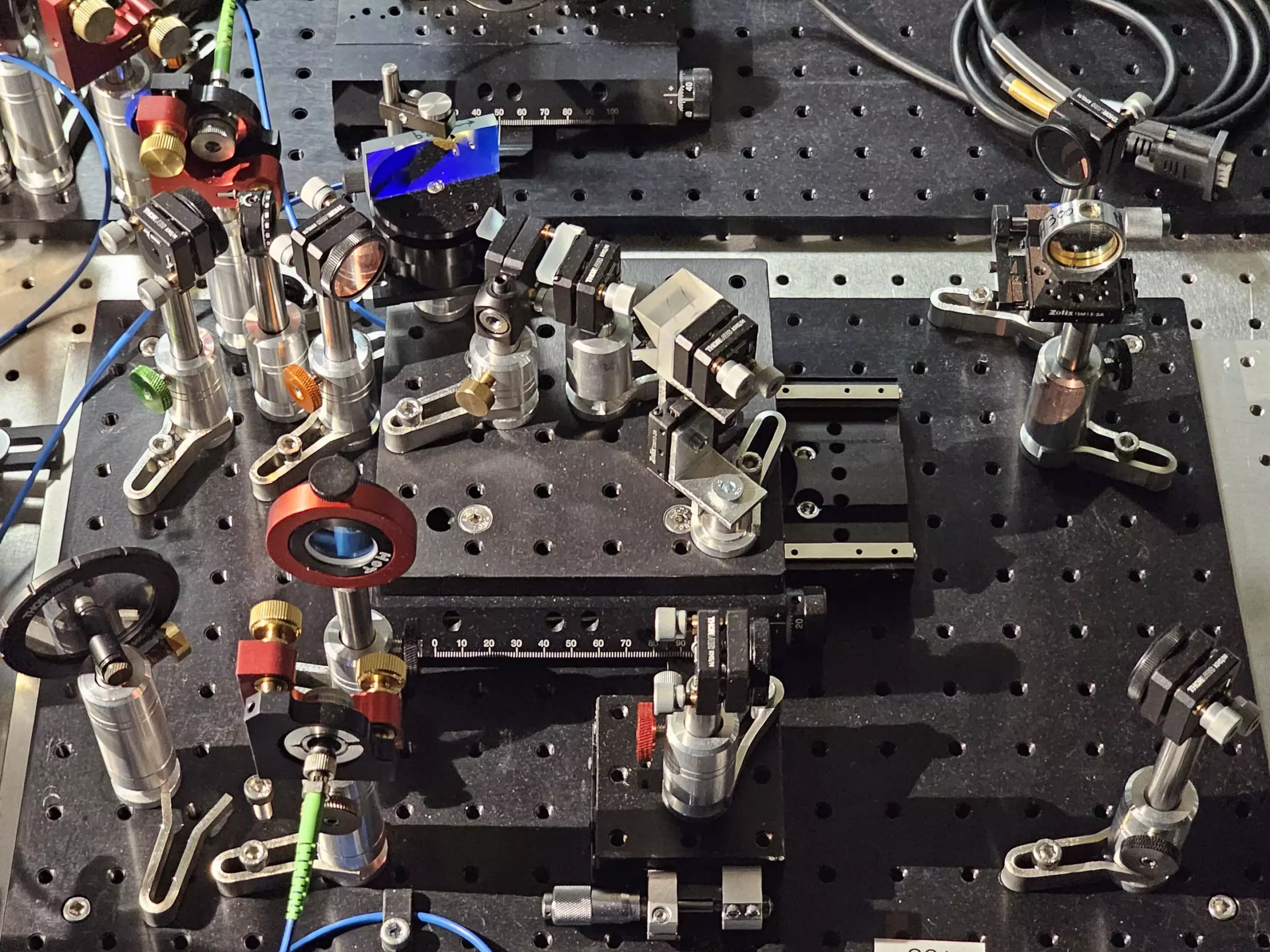In the ever-evolving field of spectroscopy, advancements in technology are pivotal for understanding complex light interactions. Two researchers from the University of Warsaw have recently made significant strides by developing a quantum-inspired super-resolving spectrometer. This groundbreaking device, emerging from the Quantum Optical Devices Lab, marks a notable leap in the resolution capabilities relevant for analyzing light pulses. By improving the resolution more than two-fold compared to existing methodologies, this innovation presents substantial implications in both optical and quantum networks.
At its core, spectroscopy delves into the spectrum of light emitted by various substances, allowing scientists to identify chemical compounds through their unique spectral fingerprints. For astronomers, the same principle applies to remote celestial bodies, providing insights into their characteristics such as composition, distance, and overall age. Similarly, in modern telecommunications, distinct colors of light function to transmit vast amounts of information over fiber optic networks. The ability to discern closely positioned spectral lines remains a formidable challenge in these fields, often limited by traditional imaging techniques that necessitate separating overlapping optical channels.
Historically, the Rayleigh criterion posed significant limitations, indicating that closely spaced channels could be virtually indistinguishable—a phenomenon extensively studied by Lord Rayleigh. The advent of quantum information science spurred fresh perspectives on this limitation, revealing that typical spectroscopic methods often overlook essential information held in the phase of light’s electromagnetic field. By leveraging quantum-inspired concepts, researchers can now extract latent information, paving the way for enhanced resolution capabilities.
The crux of the researchers’ innovation lies in the Super-resolution of Ultrafast Pulses via Spectral Inversion (SUSI), which mirrors the principles of quantum-inspired super-resolution in imaging. The central challenge was adapting these theoretical constructs to the time-frequency domain. In super-resolved quantum imaging, two paths of an interferometer capture light emerging from an object. In this configuration, one path contains an inversion device that effectively alters images, subsequently allowing for interference with the original light source. This enables better discernment of slight positional differences via photon detection.
Translating this method from imaging to light pulses involved reconceptualizing how to assess pulses of differing frequencies emitted simultaneously. In traditional spectroscopic practices, overlapping distributions of light pulses limit the ability to distinguish between closely spaced frequencies. The innovative SUSI method decreases this imprecision significantly.
To realize this method, the researchers devised a fundamental yet ingenious approach: they employed a Fourier Transform in one arm of the interferometer and an inverse Fourier Transform in the second arm. This dual approach provided a balanced device that is scalable and efficient. Notably, both Ph.D. student Michał Lipka and Dr. Michał Parniak played crucial roles in bringing the SUSI device to life. The engineering of the device was not only a technical problem; it was a challenge that required innovative thinking and precise execution.
SUSI’s potential applications extend far beyond laboratory settings; it promises integration into photonic chips and super-spectrometers, enhancing the capabilities of optical networks vital for secure data transmission. This development represents a key advancement toward realizing more efficient quantum networks where precise measurement of spectral lines becomes increasingly critical.
Moreover, with its capability to improve resolution significantly, SUSI opens doors to more nuanced spectroscopic studies, enabling deeper exploration in fields such as material science and astrophysics, where precise measurements can yield transformative insights.
The advancement of a quantum-inspired super-resolving spectrometer signifies a crucial turning point in the study of light and its applications. By addressing long-standing challenges in spectroscopy through innovative engineering and quantum principles, researchers at the University of Warsaw have positioned this device not only as a scientific milestone but also as a valuable asset for future technologies. The capability to minimize errors in measuring closely spaced spectral lines underscores the importance of continually pushing the boundaries of knowledge and application within the realm of quantum optics.


Leave a Reply